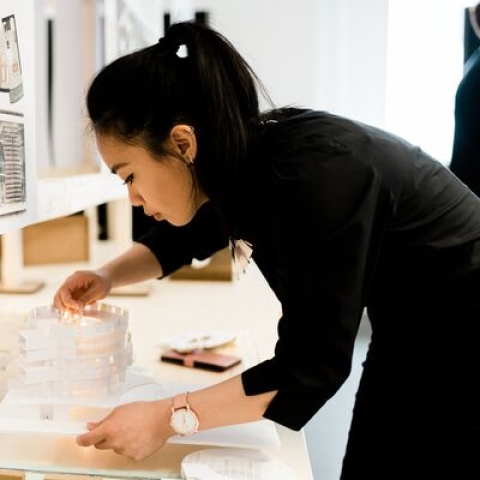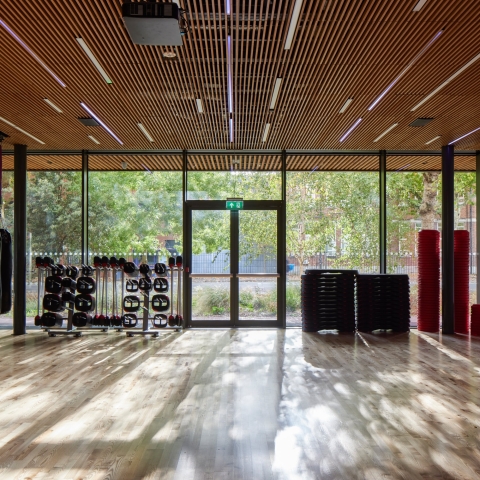
Competition for jobs in this sector is fierce and work experience is vital to securing a graduate job. Pre-entry work experience in architectural, design or construction environment is desirable and highly regarded by recruiters.
Types of opportunities
Below are some examples of the different types of opportunities to gain experience while you study.
Placements will give you a long-term look at an organisation, and help you to build contacts and experience.
On some degrees, work placements are part of the programme, whilst on others you can choose to complete a placement as one of your modules. Should you choose to undertake either your first point of contact is your placement team.
Learn more about taking a placement
You can also choose to take a Self-Employed Placement. This allows you to work for yourself during your placement year and receive support from the University's Student Startup Team. You will have access to funding opportunities, networking events and workshops.
It is worth considering the voluntary sector for work experience. Seize any opportunity to get involved in local community projects to help you develop your work experience. Our Volunteering Bank provides local opportunities to undertake alongside your studies.
You can also get involved in relevant university projects through the different groups and societies via the Student Union. This is a good way of demonstrating your motivation and interest in this area of work.
Internships are usually for a fixed period and give you more hands-on experience. Many employers will treat interns in the same way as full-time employees, so when future job roles ask for 'at least one year's experience' you can include an internship in this type of experience.
Architect practices tend to offer internships over the summer break, which can be a great opportunity. But since a lot of them are small businesses, they might not advertise their opportunities as much as some other graduate employers, so you have to be more proactive.
This is an opportunity for you to spend time with an experienced professional and learn about what they do and their role.
Whatever experience you gain will help your understanding of the skills required in the architecture field. It will also give you an idea of the challenges and triumphs of the creative process.
Be proactive and try to gather inspiration and ideas from the world around you: join creative clusters and attend networking events. This is a great way to meet people working in architecture and will help you with your networking skills. LinkedIn is a useful platform to network with sector employers.
You can also speak to your tutors in the Faculty of Creative and Cultural Industries about potential contacts and opportunities for work experience over the easter period or summer vacation.
Where to find opportunities
There is no centralised list of architectural practices that offer work experience, so you need to approach employers directly. Remember to think about smaller companies as well as large organisations, contact architects in your local area for 1-2 weeks of experience and don’t just limit yourself to architectural practices - remember the range of areas related to architecture e.g. construction, landscaping, interior design.
How to approach employers directly
When you approach an employer directly, you send them a speculative application. Speculative applications involve sending a CV and cover letter to an employer to ask if they can offer any work experience, even if the company is not currently advertising placements or internships.
Submitting a speculative application shows your interest in a specific company and your willingness to go above and beyond to develop your skills and understanding of the industry.

Finding employers to contact
- Riba Appointments - The Royal Institute of British Architects jobs board. Search and apply for Part 1 and Part 2 architectural assistant jobs.
- bd4jobs.com - Building Design's job website, with a selection of recruitment tools on offer to help you find the ideal job. Browse jobs by function to find current Architecture part 1 vacancies
- Mustard - Specialist recruitment agency working across the design sector in the UK and Internationally. Search for current vacancies by sector and location to find relevant part 1 and part 2 architecture jobs.
- Dexigner - Example architecture portfolios
Tips to build experience
Explore the various areas within the architectural sector before you apply for work experience; knowing what you want to specialise in will help you focus your research and ensure you gain the relevant skills.
- Get involved in relevant University or external groups or competitions, this is a good way of demonstrating your motivation and interest in this area of work.
- Speak to your tutor or other members of Faculty staff researching in the areas that interest you, as students are sometimes recruited to work on research projects over the summer.
- Be proactive and make direct contact with organisations that interest you and apply speculatively; send a targeted CV and a covering letter focused on why you are interested in them and why they should be interested in you.
- Create a LinkedIn profile to network with sector employers - see our Networking and Social Media section for further guidance.
Explore the Architecture Career Guide
Architecture career guide
A career in architecture can take you in many directions—from reimagining cities to conserving historic spaces. Whether you’re just starting or considering a career change, this guide will help you understand the different paths into the profession and how to make your first steps count.

Getting started in architecture
Take the first steps to beginning your career in architecture.

Finding a job in architecture
Explore different ways you can find employment in architecture after you graduate.







